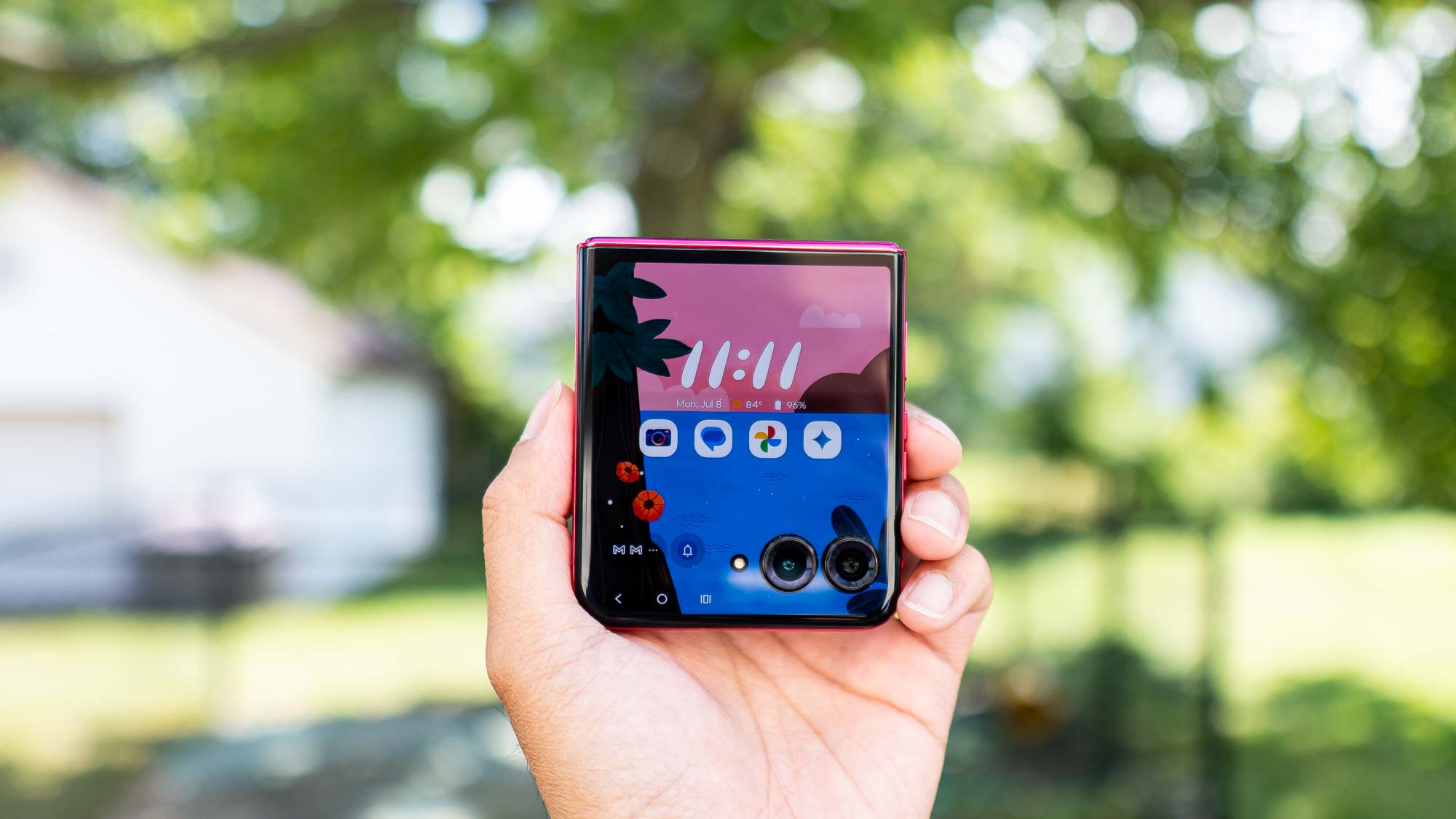
I was enamored by last year’s Motorola Razr Plus (2023), mainly because it did the unthinkable by dethroning Samsung's flip phone and earning the status of the best foldable phone around. With the Razr Plus (2024), Motorola takes everything I loved about last year’s model and makes it better, with all the right the iterative improvements to make this phone a solid contender if you're looking for a great foldable flip phone.
Can you believe it’s been 20 years since the original Razr’s release? While the Razr Plus (2024) pays homage to the iconic flip phone, the new release enjoys a prime opportunity to get a head start to win over consumers before the competition comes around. Samsung’s new Galaxy Z Flip 6 is knocking at the door, so it’s imperative for Moto to make an impression now.
This year’s Razr Plus is a worthy upgrade on paper that packs in a larger external screen, bigger battery, faster processor and a new telephoto camera to get you closer than ever before. However, keep in mind that several key AI features are coming later.
In my Motorola Razr Plus (2024) review, I’ll tell you how much of a bigger upgrade it is over its predecessor and whether or not this new Razr has enough substance to convince you to choose this $999 device over other traditional slates. And for readers outside the U.S., be aware that the Motorola Razr Plus (2024) is known as the Motorola Razr 50 Ultra in the UK and Australia.
Motorola Razr Plus (2024) review: Specifications
Motorola Razr Plus (2024) review: Price and availability
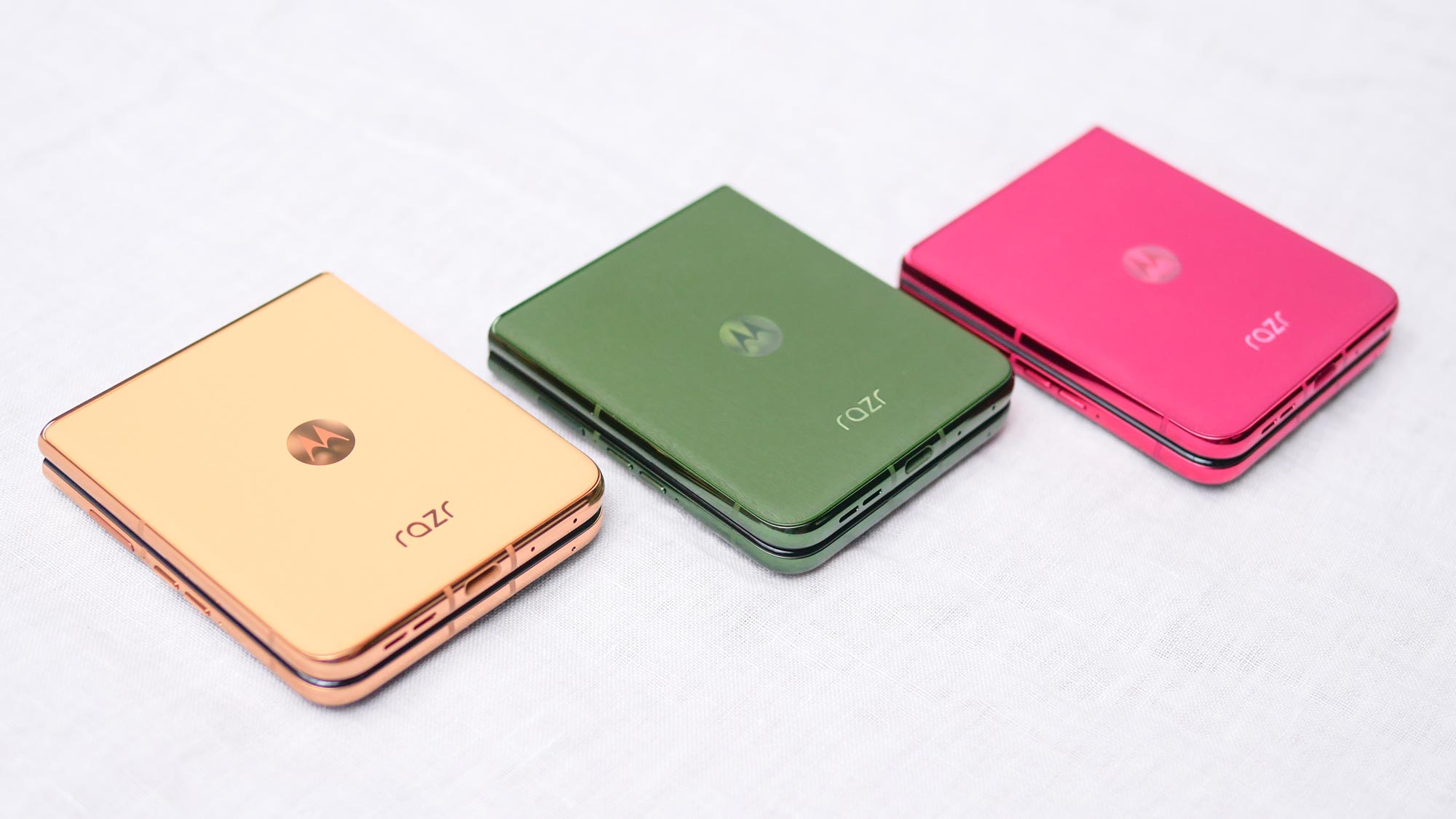
One thing that warrants praise is that Moto has kept the price of the Razr Plus (2024) unchanged at $999 / AU$1,699, giving it a competitive edge against other flippables expected to release later this year. At this price range, the Razr Plus gives people a compelling reason to choose a foldable over a standard flagship slate.
In the US, preorders for the Motorola Razr Plus 2024 are available right now through T-Mobile, AT&T, Best Buy, Amazon, and Motorola directly, with general availability set for July 24. I thought we’d get more carriers on board with the Razr Plus (2024) than before, but it could be just a matter of time before it shows up on major carriers like Verizon and AT&T.
It’s worth mentioning that there’s only a single storage option available, but at least it's a generous 256GB of UFS 4.0 storage paired with 12GB LPDDR5X RAM. For the price, I think this is pretty fair, given how there are still other flagship phones that still come with a base storage of 128GB.
In Australia, the phone will go by the name Motorola Razr 50 Ultra; it's available for preorder now until July 16 (with an on-sale date of July 17) at JB Hi-Fi, Harvey Norman, OfficeWorks, The Good Guys, Mobileciti, Amazon, and Motorola's online store.
Motorola Razr Plus (2024) review: Design
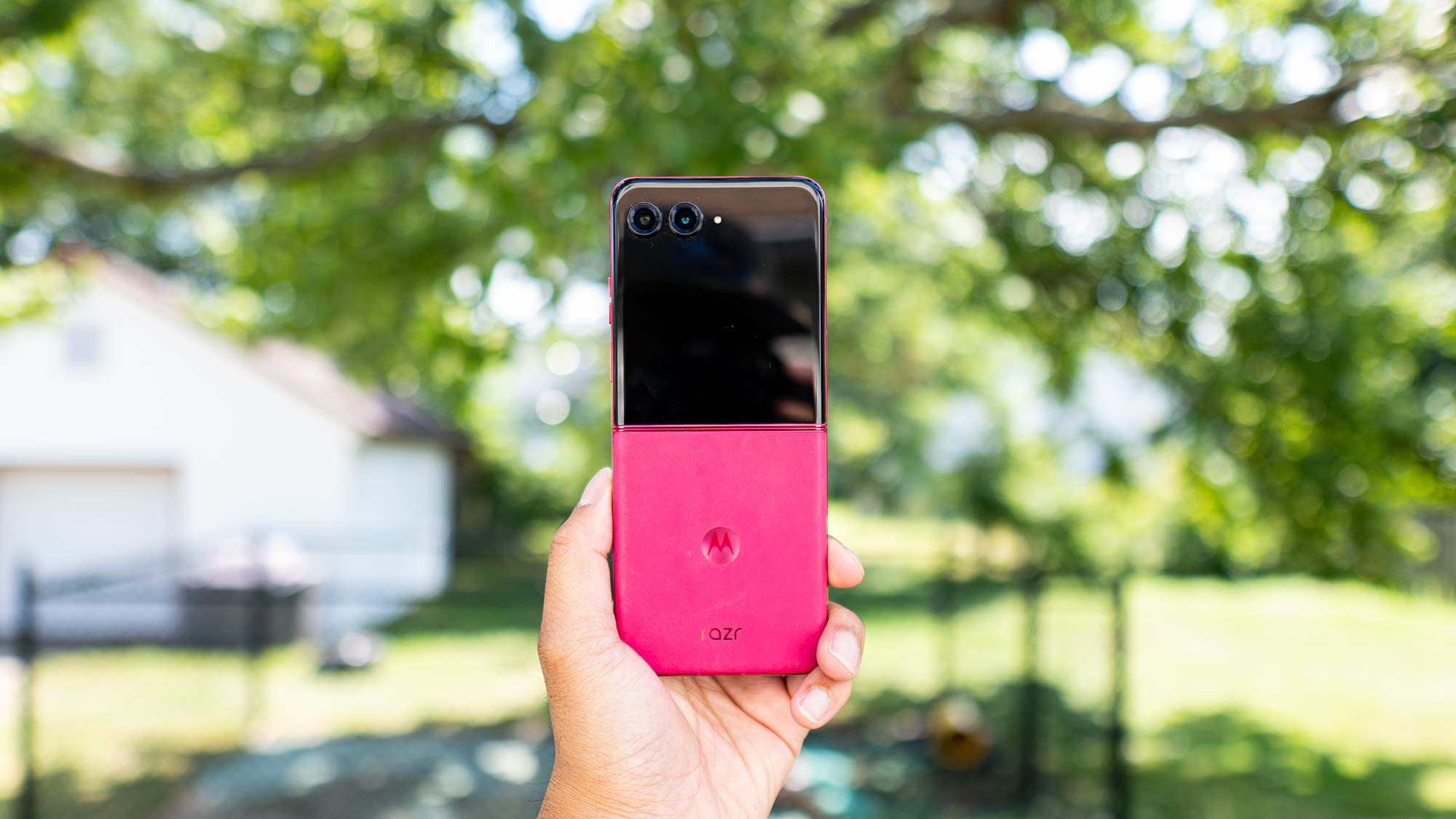
Side-by-side, it’s almost hard to tell the differences Motorola has done with the design of the Razr Plus (2024) — but the improvements are noteworthy. Style is yet again the foundation of the Razr's identity, allowing it to stand apart from every other phone you see in the real world.
I really love how gentle the Razr Plus feels thanks to its contoured edges, the grippy feel of its soft vegan leather and all of the striking colors it’s available in. Not only are the aesthetics eye-catching, but it's still incredibly lightweight at 6.66 ounces and svelte with a razor thin profile of 0.27-inches thin when opened.
Motorola also improves the Razr Plus' durability, not only with a better IPX8 rating and Gorilla Victus Glass protecting the outer screen, but I notice it in how it opens. That’s because the new Razr Plus is much more snappy with its folding mechanism, giving it that satisfying snap when I close and open it — much like the feeling of the original Razr from way back when.
This is due to the hinge being 30% smaller, which interestingly enough, also minimizes the crease along the middle of the display. It’s still noticeable at certain angles, but it’s nowhere as prominent as the crease across the Galaxy Z Flip 5 screen.
Best of all, the Motorola Razr Plus is available in more colors than ever before, with a total of four colorful options. They include Midnight Blue, Spring Green, Peach Fuzz, and Hot Pink. These options remind me of the time when Motorola released a slew of vibrant colors with the Razr V3 during the mid 2000s.
Motorola Razr Plus (2024) review: Display
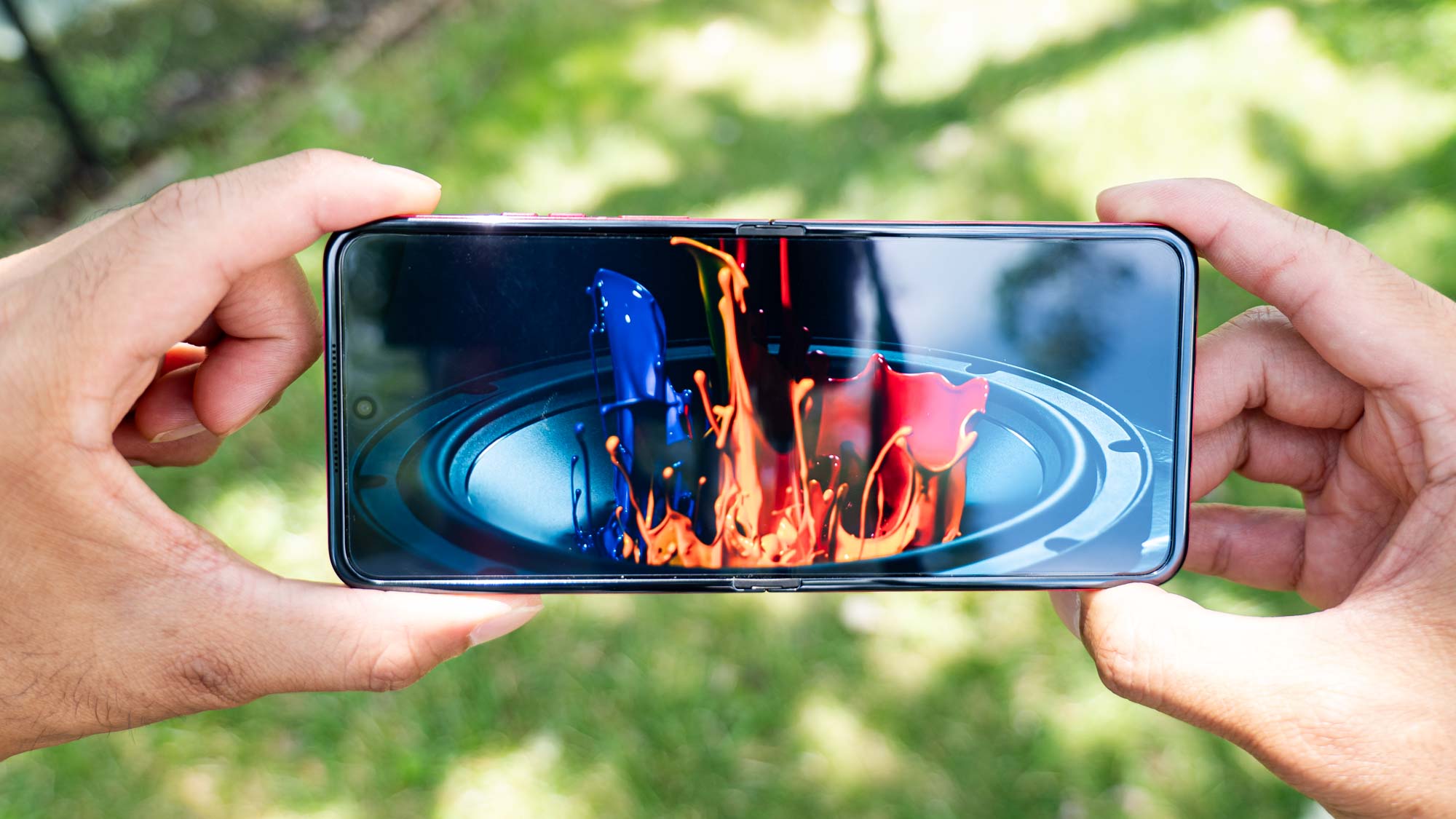
Motorola definitely made an impression on me with the Razr’s outer screen last year. What made it special was that it finally brought a sizable display that unlocked new utility I haven’t seen in other flip style foldables before.
Rightfully so, the Razr Plus (2024) gets an even larger 4-inch pOLED outer display that, more importantly, now offers an always-on display. You can even customize the screen to mimic the iPhone’s StandBy Mode with different images and backgrounds when the Razr’s set to a tent position. While it’s lighter on the customizations, it’s small improvements like this that help to differentiate the Razr Plus.
Similar to before, there’s a number of widgets to choose from with the outer screen, with the ability to punch the screen to see all the panels at once. And of course, I like that I can still run full apps natively — unlike the Galaxy Z Flip 5. Thanks to the larger screen, the Razr Plus (2024) is even more suitable for capturing selfies with the better main camera, along with being able to see more details in all the apps I use. Beyond that, the extra real estate also makes typing a bit easier than before.
Opening up the phone reveals its 6.9-inch FHD+ pOLED display. Out of the box, the colors look a bit more muted than I’d like, so I recommend switching the display setting to Vivid for better color saturation. There’s still a protective screen cover over the display, but now it extends all the way to the edges to make things look more discreet. I played a couple of YouTube videos indoors without any issues, but it can still be challenging to make out details on the screen outside when the sun's super bright.
In Tom’s Guide’s benchmark testing, the screen reaches a peak brightness of 2,158 nits. That’s short of Motorola’s claim of 3,000 nits, but it’s a big improvement over the 1,084 nits that the 2023 Razr Plus reached.
The Razr Plus (2024) also features a display refresh rate up to 165 Hz, which gives all the navigational animations of the interface an extra smooth look. However, it’s a dynamic refresh rate that will adjust depending on what I’m doing on the phone. While this helps to optimize the battery, I wish there was an option to lock onto that 165 Hz refresh rate at all times.
Motorola Razr Plus (2024) review: Cameras
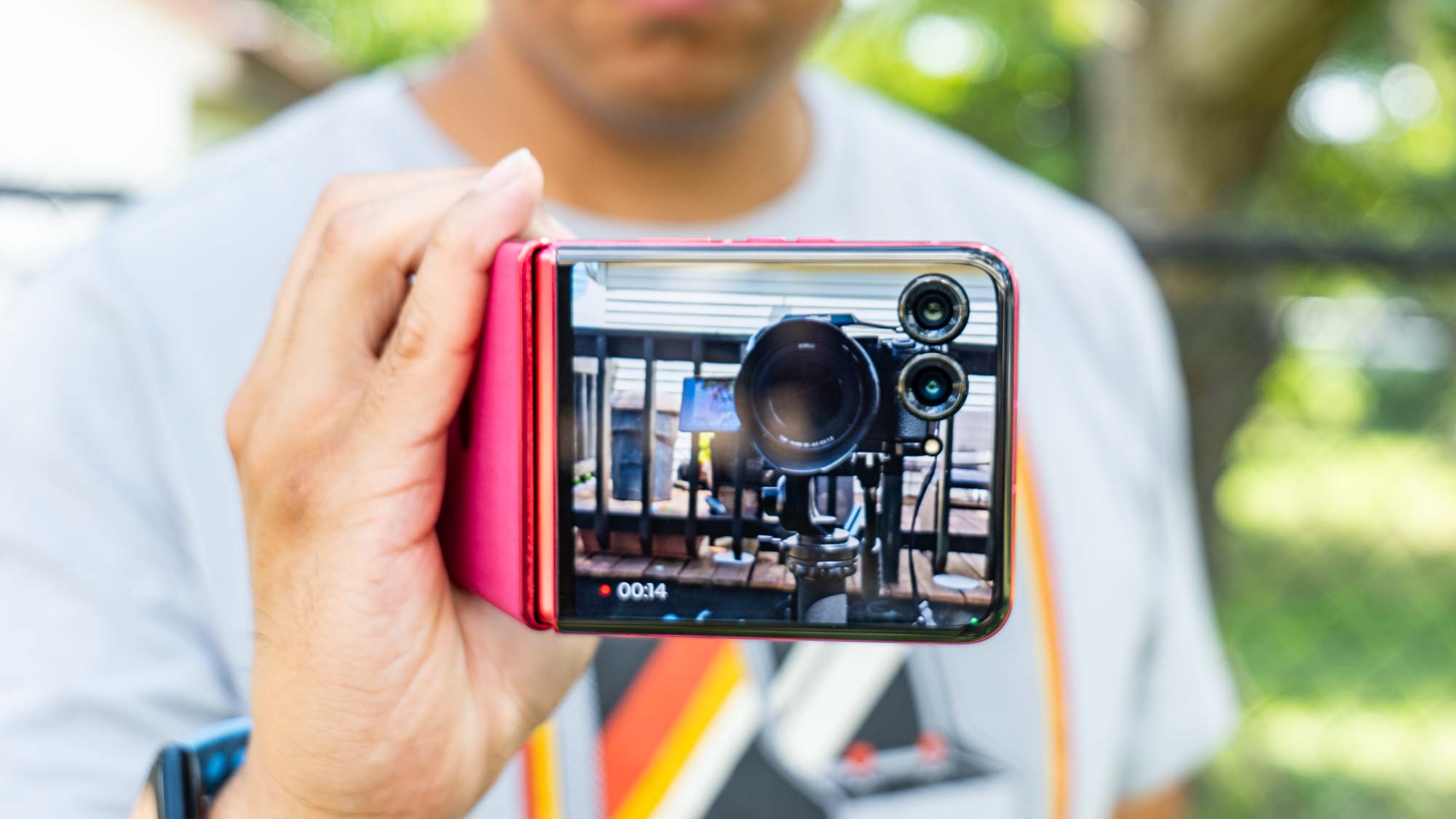
I’ve been asking for telephoto cameras in more flip phones, and while the Razr Plus (2024) makes this a reality, it requires a compromise. On one hand, I’m stoked that the main camera’s been upgraded to a beefier 50MP sensor, but Motorola ditches the ultrawide camera in favor of a 50MP telephoto with 2x optical zoom.
So what’s the big deal? Well, I really found the ultrawide camera of last year’s Razr Plus handy for vlogging and self recordings because of its wider field of view — and its omission is noticeable because the main camera’s field of view is narrow. As a result, only my upper torso is visible when I’m vlogging, and it’s nowhere as good when it comes to getting another person in the shot with me.
I think omitting the ultrawide camera is a missed opportunity because the Razr Plus (2024) would’ve made for a more compelling arrangement if Moto kept it and leveraged pixel binning with the main camera to deliver a 2x optical quality zoom. (This is the approach the iPhone 15 takes with zooms, for example.) In theory, it would deliver the same package as the triple camera systems we get in many flagship phones.
Despite that, the camera app gets its share of changes as well — including a new camcorder that can shoot vertical or horizontal videos while in this mode. Another change pertains to Photo Booth, which now works on both the internal and external cameras.






Starting off with the main camera, there are subtle improvements over its predecessor on the 2023 Razr Plus — like in the daytime shots above. While the details don’t seem to be a tremendous boost, I do prefer how the newer Razr Plus casts a warmer color temperature and better dynamic range throughout the spot. The shadowed areas along the tree branches are brighter to expose more of the details there.
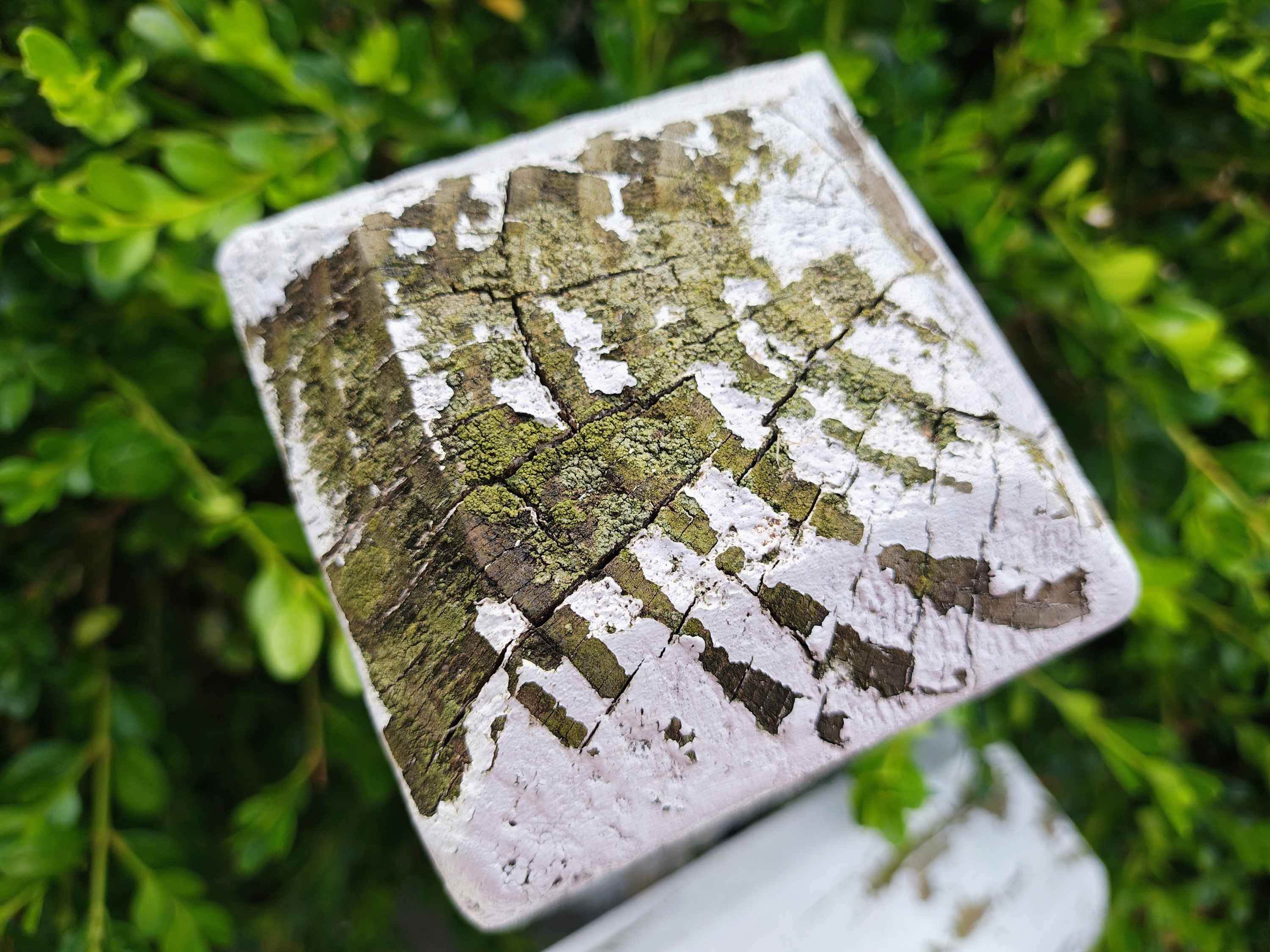





Although it technically doesn’t have a dedicated macro mode, the newer Razr actually performs better in this area — even though I’m forced to move the phone back a bit further from my subject to achieve the right focus. Compared to last year’s Razr, the new model draws out much more crisp details in the moss covered wooden post.






The Motorola Razr Plus (2024)'s 32MP selfie camera doesn’t result in significant improvements with the selfies I snapped against last year’s phone. All of my facial features, like the stubble around my face and the wrinkles on my forehead, are well represented with both phones. The only difference I can tell is the additional color saturation of my shirt. Otherwise, I don’t see much of a difference, which I suspect could be due to how the protective cover screen now overlays the selfie camera.






With portrait photos, however, I very much prefer the results from the newer Razr Plus. In addition to doing a better job at softening the background, the extra color saturation applied by the newer Razr also makes my summer tan look extra golden. It also helps when there’s a bit sharpness to accentuate all of my facial features — including more definition to my hairline.








The addition of a dedicated telephoto camera with optical zoom undoubtedly helps the newer Razr to pull out a little more detail with its shots, like how I can better discern the names of the wine bottles at 2x zoom — whereas they’re smudgier with the 2023 Razr. This becomes more apparent at 4x zoom where those details look more indistinct with the 2023 Razr photos.
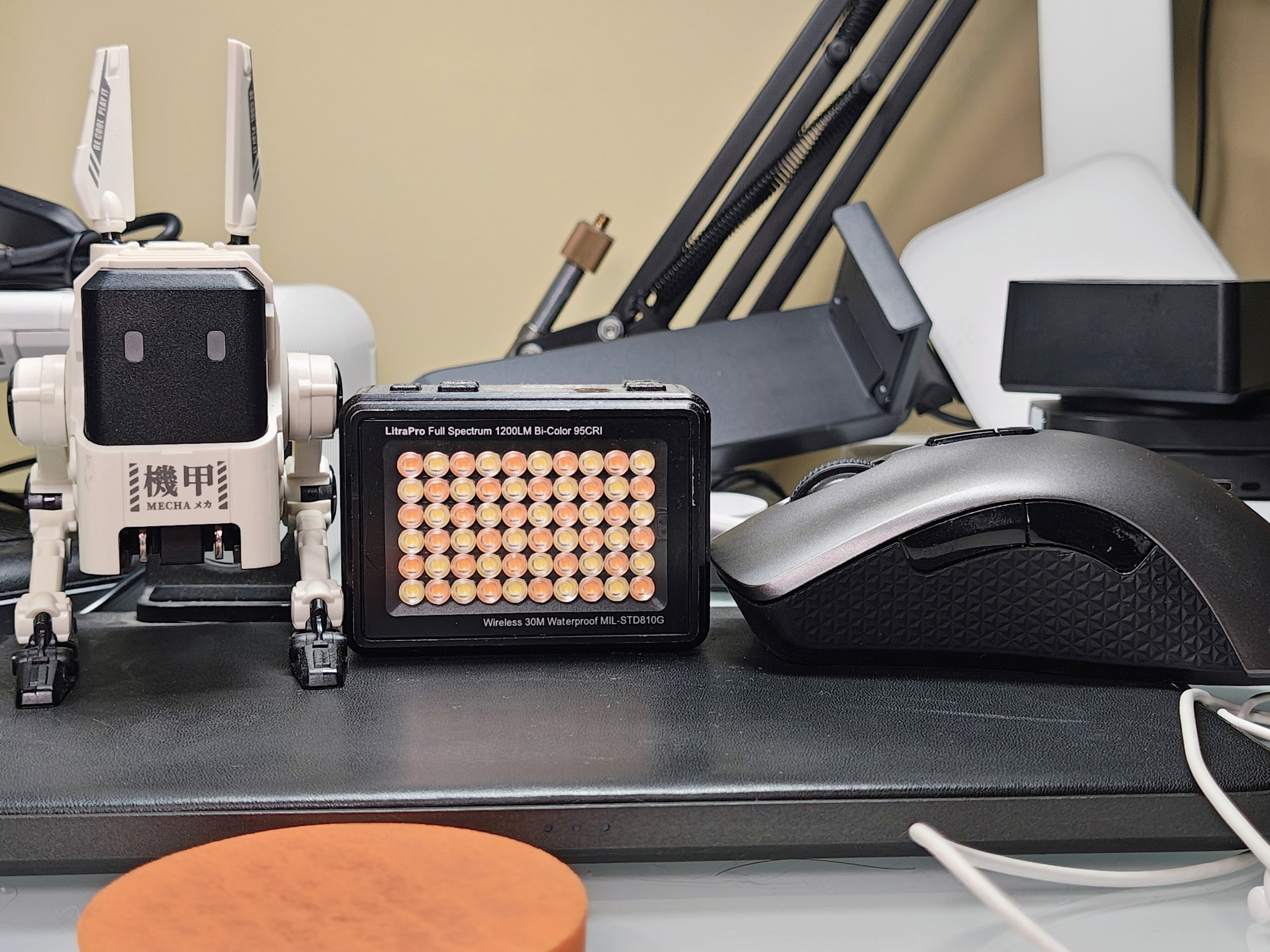
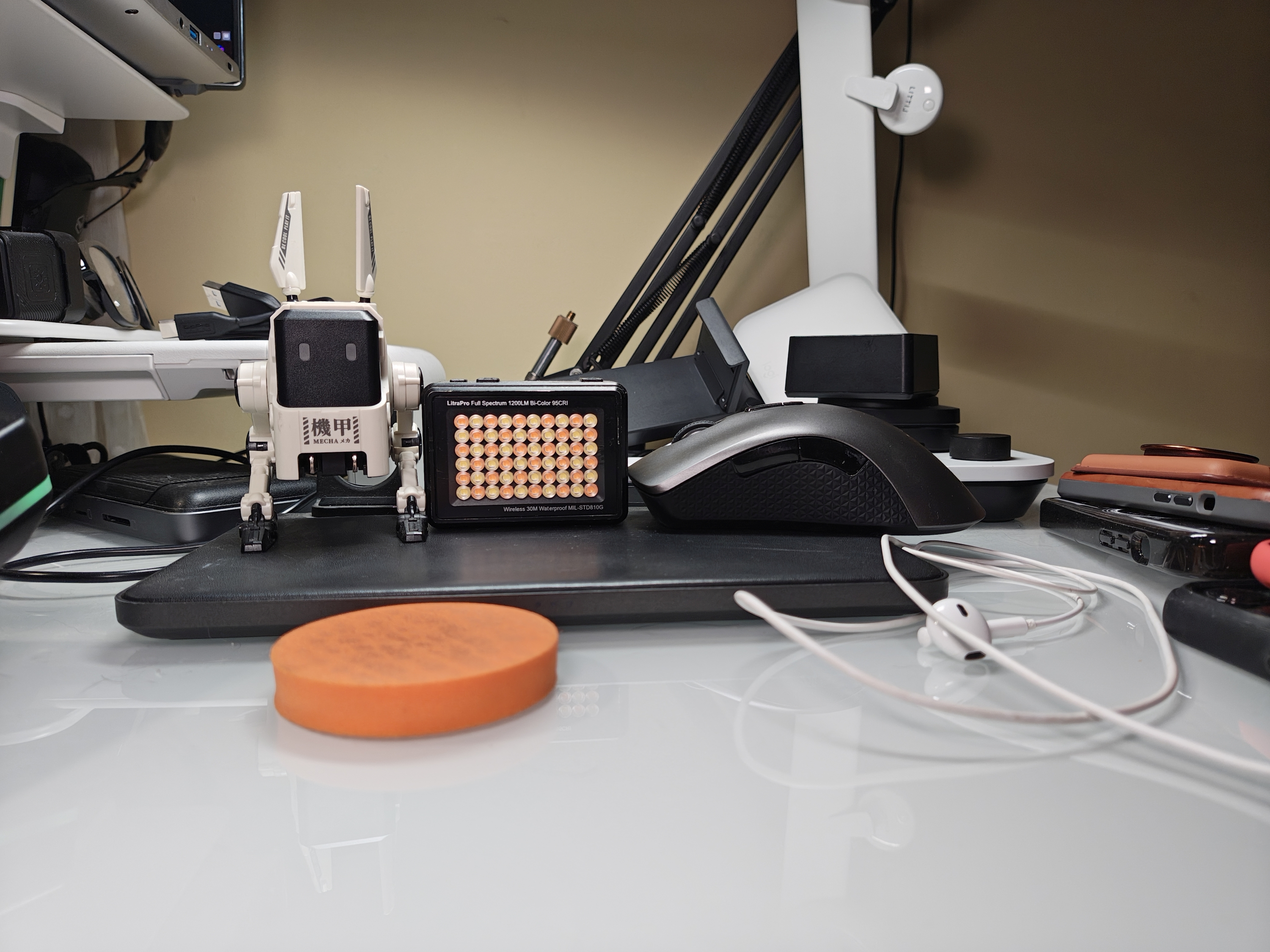
While this is an improvement over last year’s phone, I also tested out the new Razr Plus' telephoto camera against the main camera’s ability to take full-res 50MP samples. After framing the scene, I realize that the 50MP samples pull in just as much detail and sharpness as the dedicated telephoto camera at 2x zoom. This brings me to my point of how Motorola could’ve effectively offered a triple camera setup by leaning on the main camera and pixel binning to basically achieve similar optical quality.
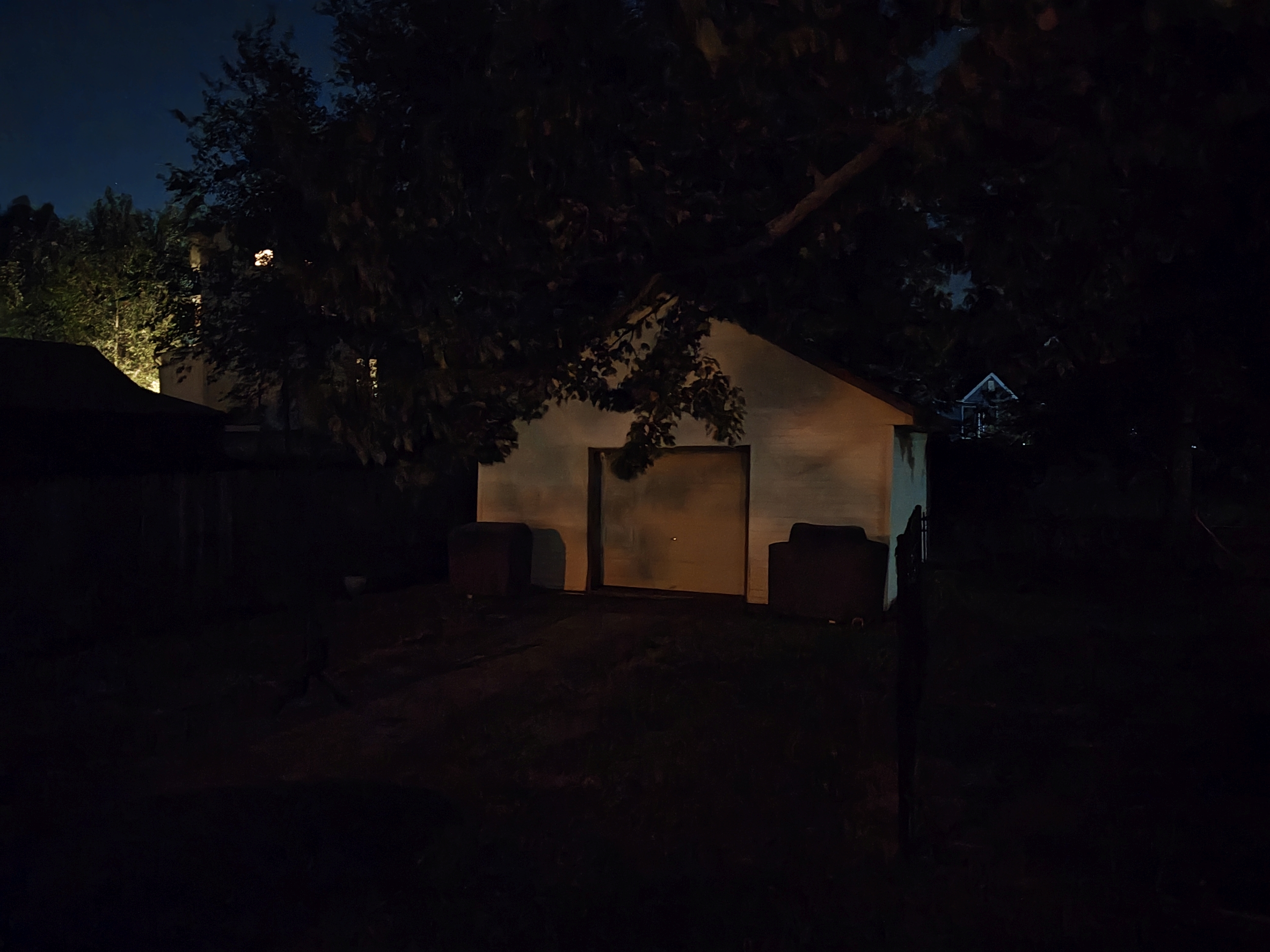

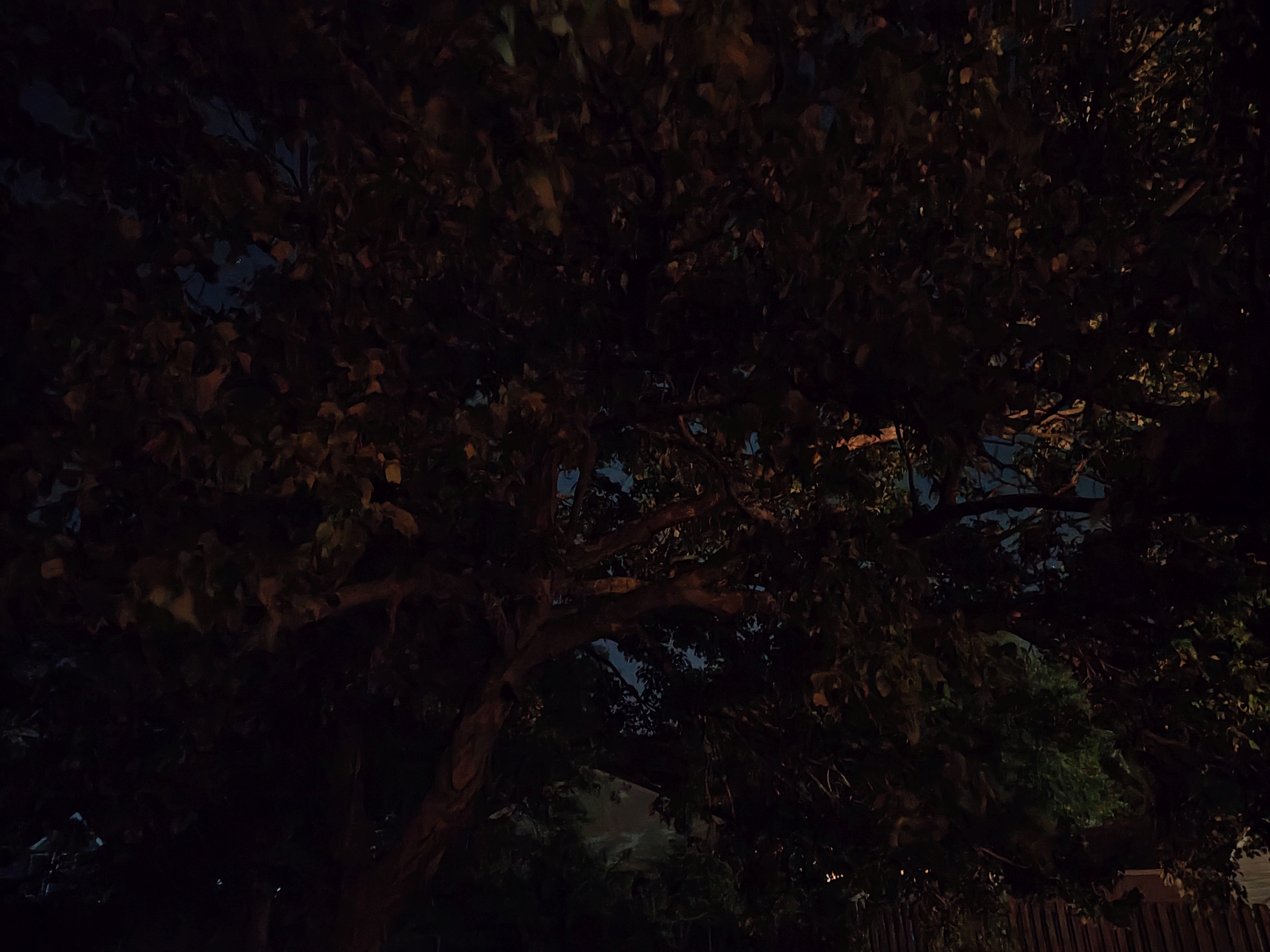



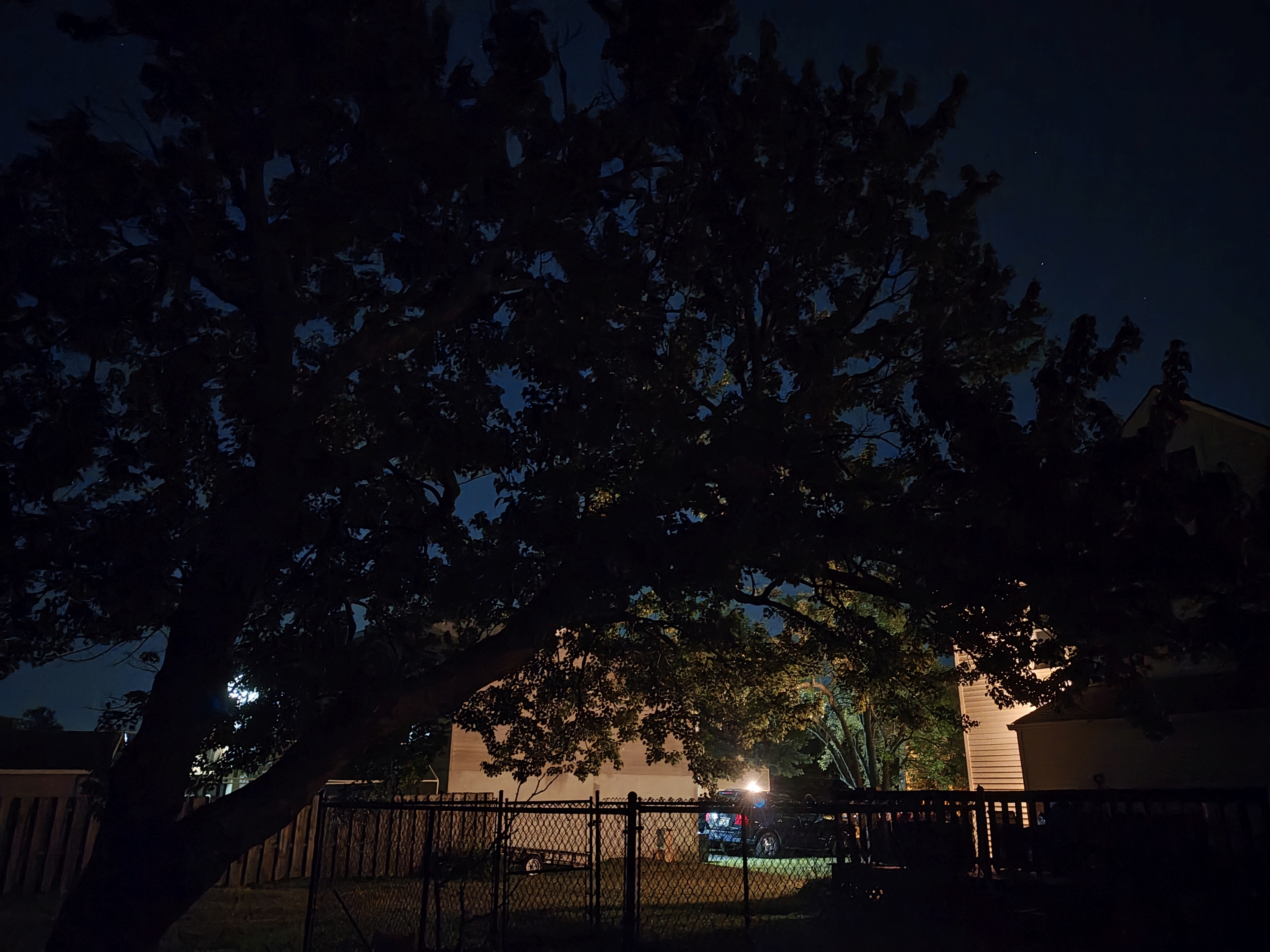
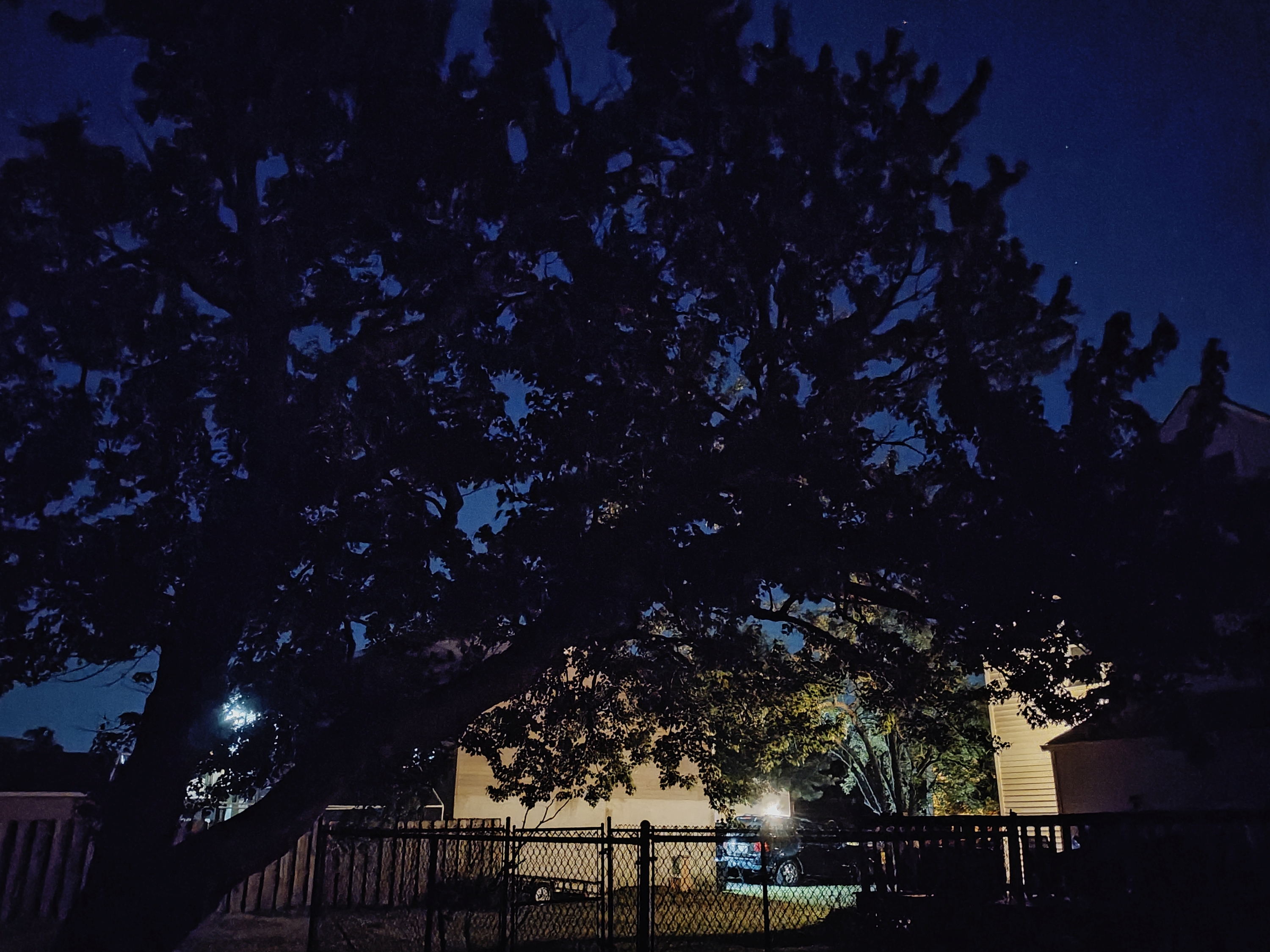
Low light was a wash with last year’s Razr, but I’m happy to report it’s slightly improved with the new Razr Plus (2024). Gone are the inaccurate colors and noisy images, but the Razr Plus (2024) still can’t match the brightening abilities found in other flagship phones. While its low light performance is better, the shot of my detached garage is still under-exposed.
Video recording tops out at 4K 60fps on the Razr Plus (2024), but HDR10+ recording is reserved for 30fps capture. It’s not bad, nor is it outstanding. Dynamic range performance is handled nicely in this mode, balancing out the exposure between the bright skies and the shadowed areas of the tree branches in the clip above. However, it’s too generous with the over-sharpening effect — which results in making the video look too artificial.
Motorola Razr Plus (2024) review: Performance
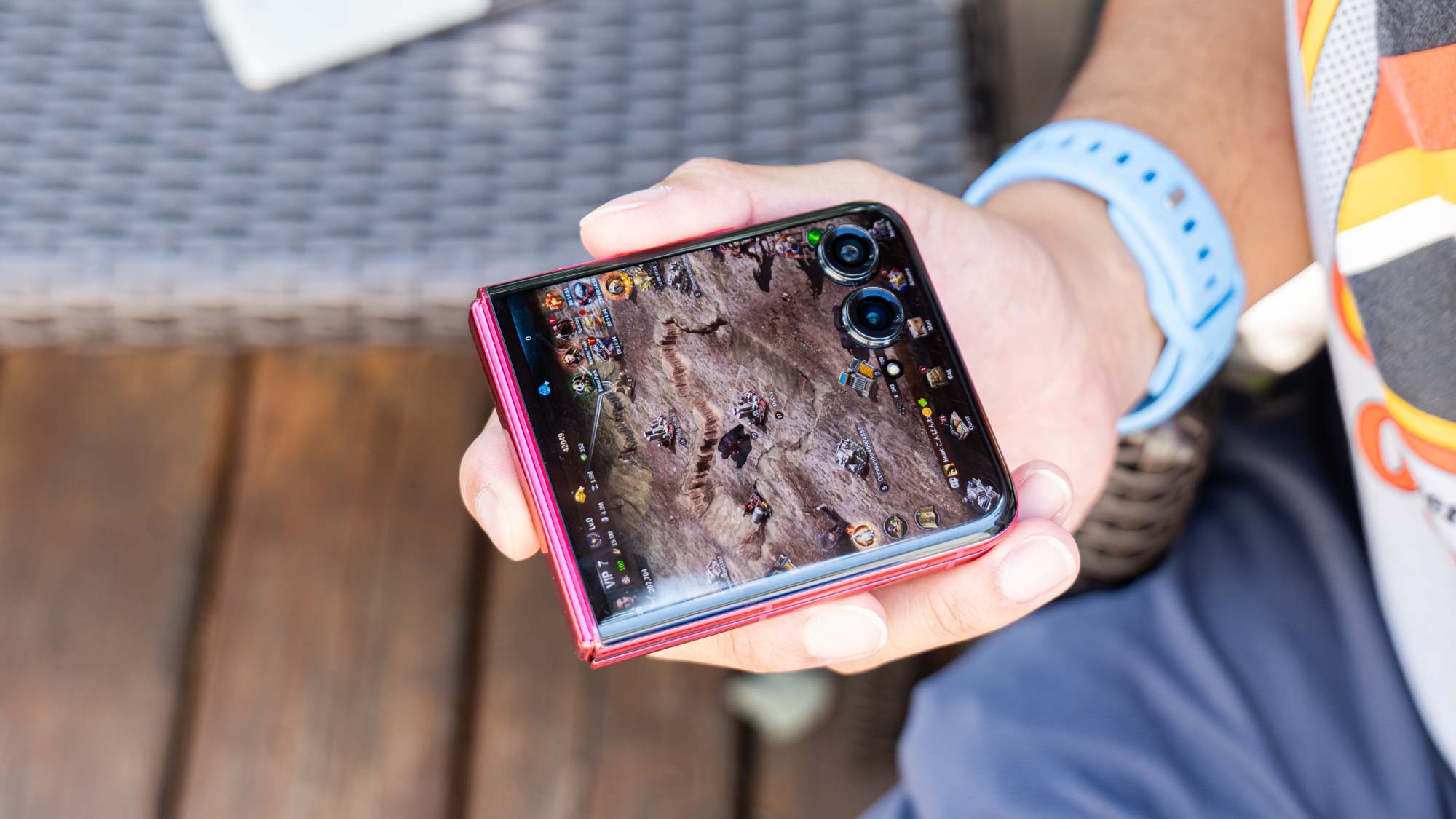
Rather than employing a previous generation chipset, the Razr Plus (2024) leans on the new Snapdragon 8s Gen 3 SoC for its muscle power. This chipset is often classified as a lower-cost version of the Snapdragon 8 Gen 3 that powers most of today’s flagships. Paired with its 165Hz refresh rate, everyday actions on the Razr are fluid and responsive. It’s not buttery smooth like an iPhone 15 Pro or Pixel 8 Pro, but it’s more than enough to convince me it’s good enough.
After running our usual set of synthetic benchmark tests, it’s quite clear that the Razr Plus (2024) posts significant gains over its predecessor. Its single and multicore Geekbench scores of 1,834 and 4,848 easily puts it ahead of last year’s Razr Plus.
Meanwhile, GPU performance is just as good with a steady 73.74 fps rate on 3DMark’s Wild Life Unlimited test. Speaking of gaming, the Razr Plus (2024) manages to handle the 3D map in Age of Origins — rendering cities and battle scenes with ease. I do like that I have access to the gaming toolkit while running my games, which lets me set it to turbo mode to devote as many of the resources to the game as possible.
The Snapdragon 8s Gen 3 is also able to juggle two apps simultaneously in split mode without any hiccups, but with so much available, I just wish it was able to save more split-screen apps in memory to give me better multitasking using several apps — similar to how Open Canvas works with the OnePlus Open. Regardless of this, the overall performance of the Razr Plus 2024 is on par with any other flagship I’ve reviewed this year.
Motorola Razr Plus (2024) review: Software and AI
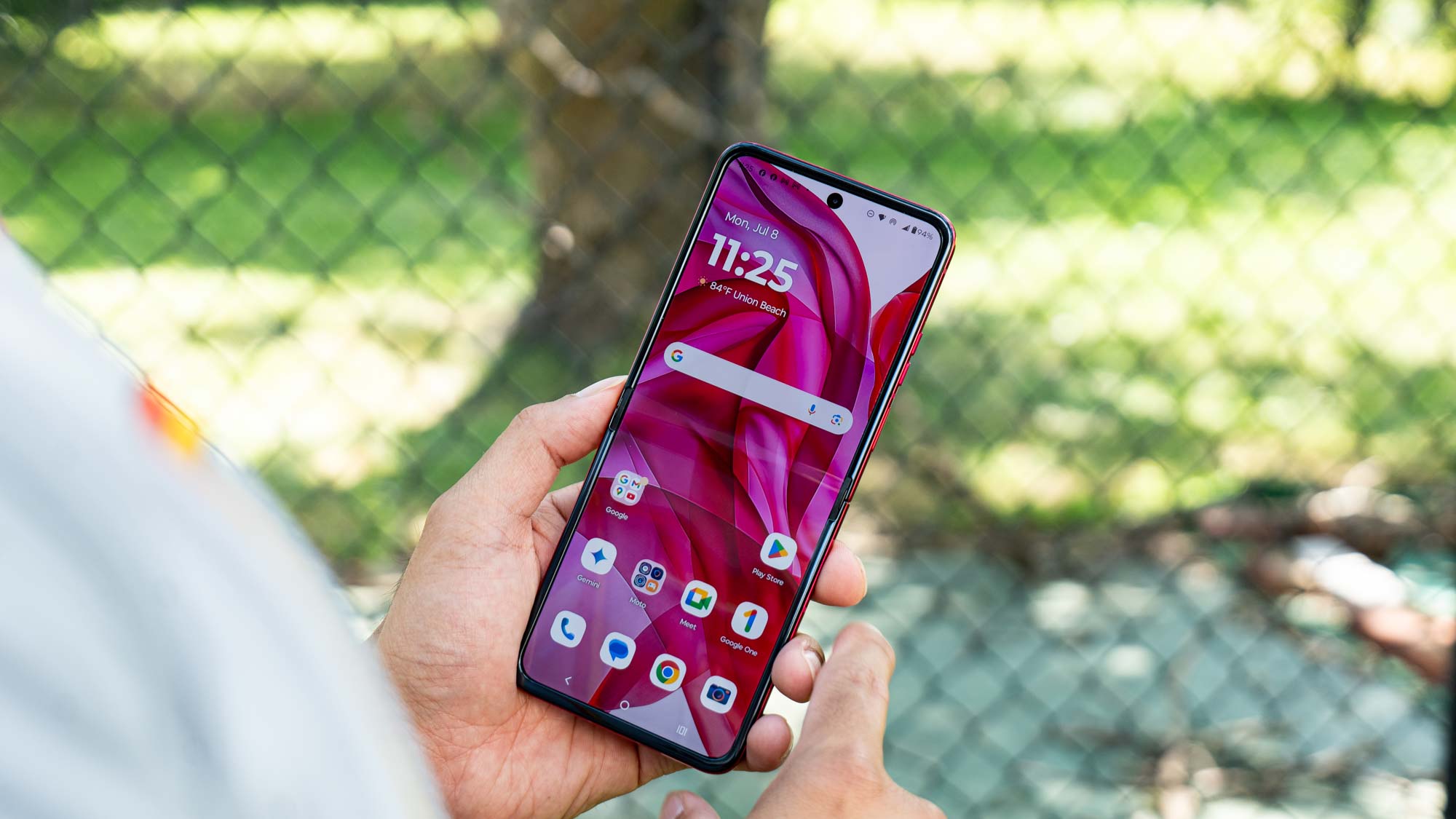
Going through the software in the Razr Plus (2024), it’s very similar to its predecessor in the way it preserves features that I’ve grown to love about Motorola’s phones. The motion gestures from before are still here, like a double chopping motion to turn on the flashlight or twisting the phone to instantly launch the camera.
Moto’s Hello UX software running on top of Android 14 looks fresh and modern. What’s missing from the onset, though, are all the Moto AI features that the company touts. These include the ability to create custom wallpapers with a Magic Canvas feature, the ability to intelligently provide highlights from all the notifications on the phone, transcribing and summarizing voice recordings, and the ability to use Moto AI to recall information.
This is a huge part of the Razr Plus’ story and I’m baffled why Motorola is choosing to release them “in the coming months” instead of including them now. Even though they’ll eventually come, it would have been more beneficial to have them at launch.

Luckily, there are still other AI features out of the box. This includes Google Gemini, which can be accessed directly from external display (not to mention the internal one) by either long pressing the power button or saying the usual “hey Google” voice command. Gemini on the Razr Plus works just like on other phones to give me travel tips and recommendations, but it’s made better here because you get 3 months of Gemini Advanced at no additional cost for handling several instructions in one sentence. This also includes 2TB of cloud storage.
Another area where the Razr Plus (2024) falls short in my opinion is enhancing the overall software experience. I already mentioned all the hand gestures the Razr offers and its ability to load some apps side-by-side to one another, but I wish more apps supported the phone's Flex Mode. That mode works flawlessly in the camera and YouTube apps, where it lays out the apps accordingly to make use of the two halves of the foldable display. However, nothing happens in other apps like Gmail or Google Photos. The reason why I’m pointing this out is because I find Flex Mode convenient for those times when I just want to go hands-free and let the phone sit upright on its own.
And finally, Motorola’s software support is a bit lax compared to everyone else — with 3 years of major Android updates and 4 years of security updates. That’s far from the more generous 7 years of support that Google has with its current generation of Pixel 8 phones.
Motorola Razr Plus (2024) review: Battery life
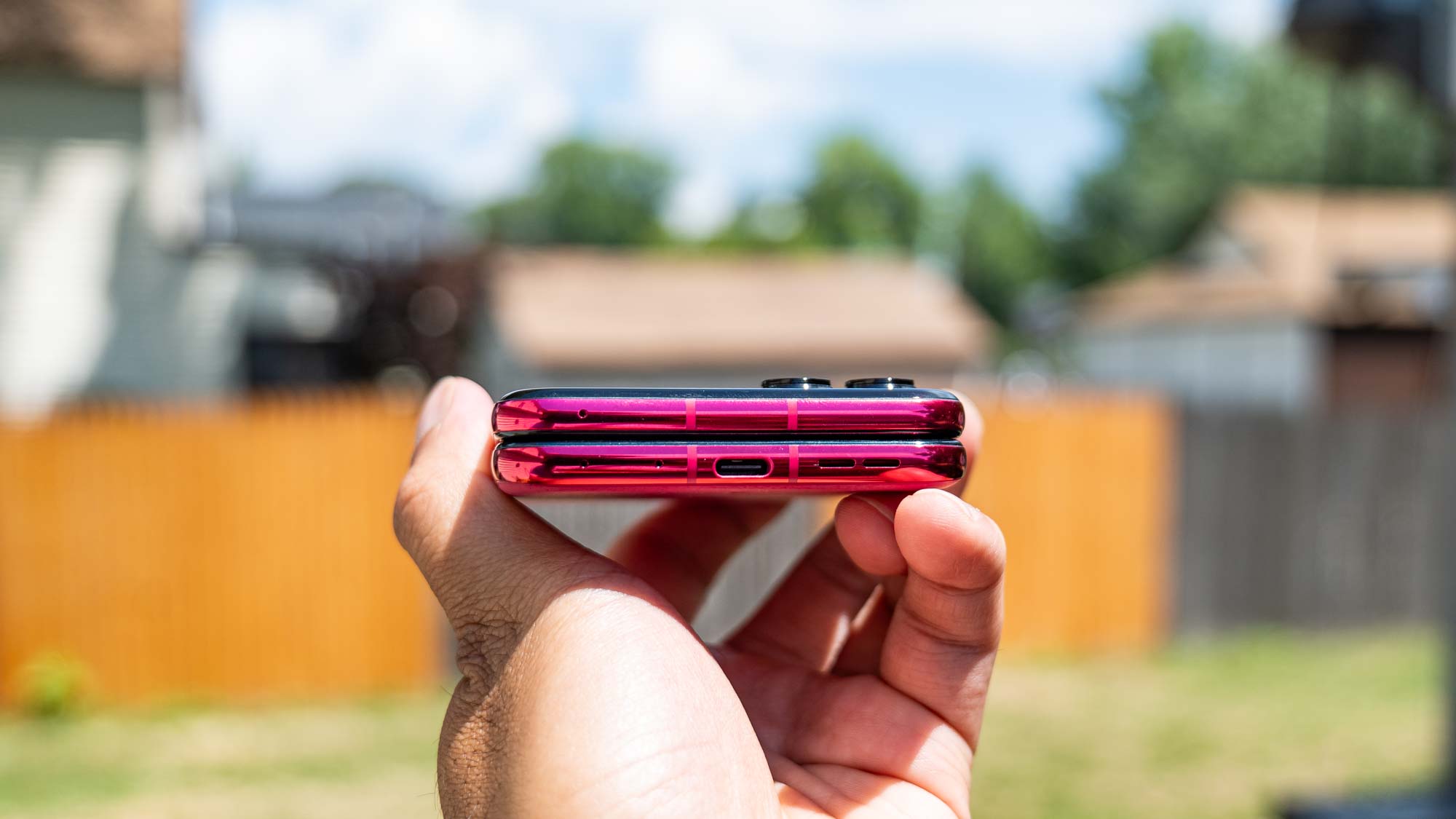
Motorola somehow manages to stuff a slightly larger 4,000 mAh battery into the svelte chassis of the Razr Plus (2024). This battery capacity increase paired with the power efficiency of the Snapdragon 8s Gen 3 got me better than expected battery life. By the end of most nights, the battery indicator frequently hovers around the 30% charge mark — which is pretty good for a foldable phone.
Tom’s Guide’s battery benchmark tests reveals it’s no slouch in this area because one battery drain test reached an impressive time of 14 hours and 13 minutes, which is a huge improvement over the Razr Plus 2023’s time of 10 hours and 9 minutes.
The upgrade also extends to the charging abilities of the Razr Plus (2024), which now offers speedier 40W TurboPower charging (up from last year’s 30W charging) and 15W wireless charging (up from 5W). After charging it for 15 and 30 minutes using a 25W charger, the battery got to 27% and 48% respectively. I suspect it would be much better with a proper 40W charger.
Motorola Razr Plus (2024): Verdict
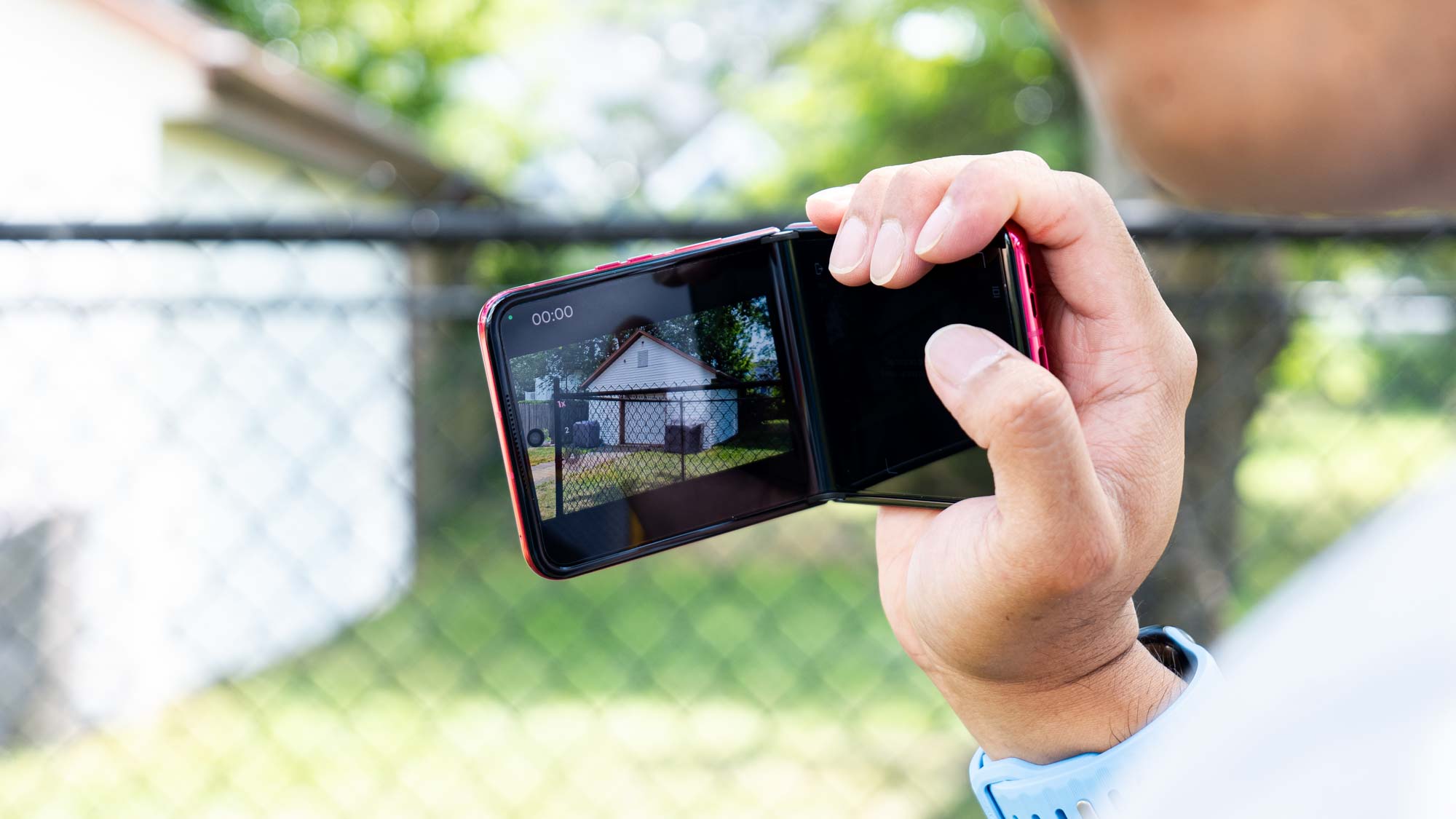
Even though I wish the phone was launching with its suite of Moto AI features, I still think that the Motorola Razr Plus (2024) is in a good position because of all the iterative improvements found throughout. It maintains the same stylish looks that has made the Razr one of the most attractive foldable phones around, while adding a bigger outer screen, much longer battery life, faster charging and camera performance improvements. What I like even more is the fact that the Razr Plus price remains unchanged at $999, which should give Samsung and everyone else something to worry about.
The only disappointment I have is Motorola choosing to ditch the ultrawide camera in favor of a dedicated telephoto lens, more so when the main camera’s full-resolution snapshots rival the quality of the optical zoom lens. Apart from that, the Razr Plus 2024 is a delightful flip foldable that’s worth a look without much compromise in its package.







